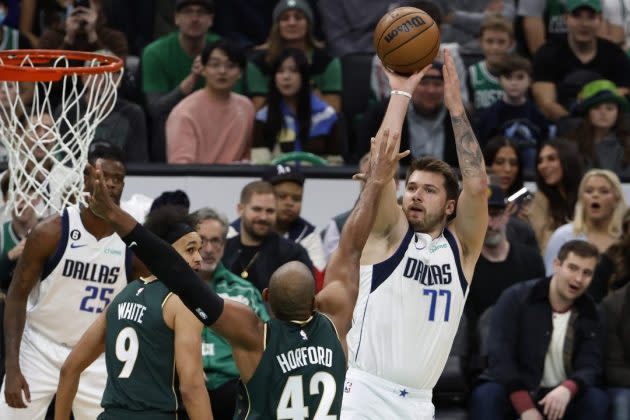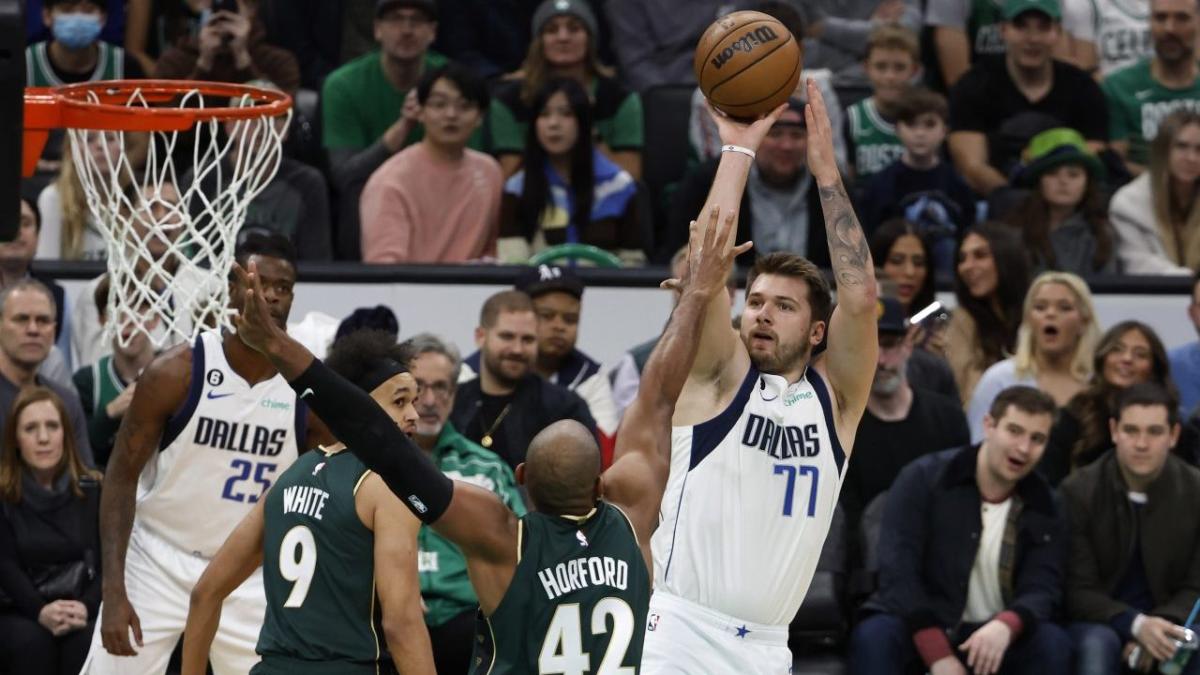
There’s an adage coined by Los Angeles Clippers’ broadcaster Ralph Lawler that in the NBA the first team to 100 points wins. Never has that been less true than this season. Earlier this week, the Portland Trail Blazers got to 100 first against the Washington Wizards and lost 123-121, which looks like a typical score nowadays.
Back in 2015, teams scored 105.8 points per 100 possessions, per Cleaning the Glass, nearly unchanged from the 105.5 average offensive rating in 2005, a decade earlier. Since then, however, the all-time league record for a season has fallen four times. Last year, teams produced 112.3 points per 100 possessions, and roughly one third of the way through this season that number is 113.3.
More from Sportico.com
The statistic actually understates this season’s scoring boom, because offense almost always improves over the course of the regular season. Save for 2014-15 when foul rates were abnormally high to start the year, average offensive rating during the first 30 days trailed the eventual figure for the full season in each of the past 19 seasons.
This year appears to be no exception. During October and November, the league-wide offensive rating was 113.1, but over the past two weeks it’s up to 114.4, and there’s a long way to go until April.
The dramatic increase in offensive efficiency over just the past seven seasons can largely be attributed to teams shooting more 3-pointers. In 2021-22, 36.8% of all shot attempts were threes, versus only 24.4% in 2014-15. The average mid-range shot yields 0.84 points and the average 3-pointer yields 1.08; it turns out stepping a few feet back to get that extra point is pretty helpful.
Stylistically, offenses have become more sophisticated, relying less on one-on-one play and more on actions involving two players, such as a dribble handoff, or even three players, such as a Spain pick-and-roll. Throw in several recent refereeing trends favoring offenses, and defending these actions has become very difficult.
What about this season, specifically? For starters, many teams simply improved their available rosters. At this time last season, Kyrie Irving wasn’t with the Brooklyn Nets, Zion Williamson and Jamal Murray were sidelined, and Damian Lillard had just sustained a season-ending injury. In addition to those stars returning, the Indiana Pacers and Sacramento Kings made a trade that seems to have improved on-court fit for both teams.
As for universal changes, the new rule penalizing intentional take fouls to stop fastbreaks has successfully boosted transition offense, which is up 0.04 points per chance over the equivalent period last season.
Half-court offense, though, is also significantly improved. Rim finishing is up two percentage points, which could be statistical noise or a product of the continued devaluing of shot-blocking behemoths in favor of small ball lineups that feature more playmakers but less rim protection.
Notably, teams are also getting to the rim slightly more. Layups and dunks are still much more efficient than threes, so a skew of the distribution towards shots at the rim aids scoring.
Players also get fouled more often when shooting closer to the basket, and free throws are highly efficient. Teams are making 20.8 free throws per 100 field goal attempts so far this year, the highest such rate since 2016-17 and a massive increase over 17.9 from the equivalent period last year, during which referees cracked down on new points of emphasis surrounding unnatural foul-drawing motions before rediscovering their affinity for whistles later in the season.
More rim attempts also leads to more offensive rebounds. The percentage of misses rebounded by the offense is at 26.9%, up from 26.0% during the first two months of 2021-22. Offensive rebounds generally lead to more efficient possessions than average, because the ball is possessed close to the hoop, as well as the second order effect of poorer transition defense due to players crashing the glass instead of running back.
Former Utah Jazz analytics director Cory Jez noted that offensive rebound rate has a wide distribution across the 30 teams in the league, meaning there’s plenty of room for the straggling teams to improve in that metric. “The marginal utility of an offensive rebound is so much higher than what you give up in transition,” Jez said. “This is one of the lowest hanging fruits in the league right now.”
Continued removal of shot distribution inefficiencies could also increase scoring going forward. Despite the supposed death of the mid-range, nearly one third of all shots still come from the lower-percentage area outside of four feet but inside the 3-point line. Post-ups are in steep decline, but plenty of big men who aren’t proficient with their back to the basket still get opportunities.
“The increase in [offensive] efficiency over the last decade is pretty linear,” Jez said. “At some point, there should be diminishing returns, and yet it feels like we haven’t gotten there yet. That’s the really interesting unknown question. When does this flatten out? Because we don’t have any evidence that it’s going to any time soon.”
Click here to read the full article.

